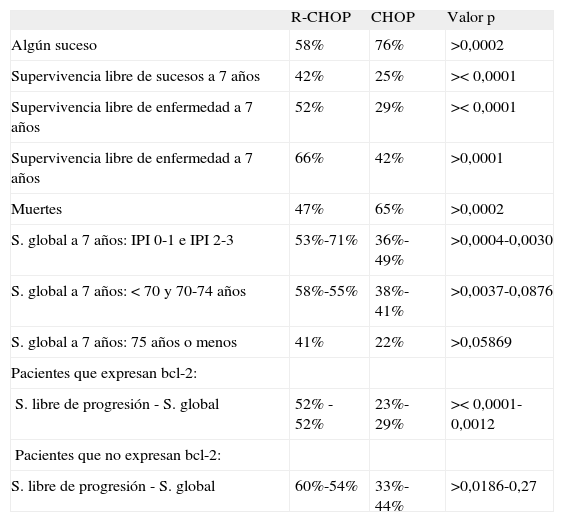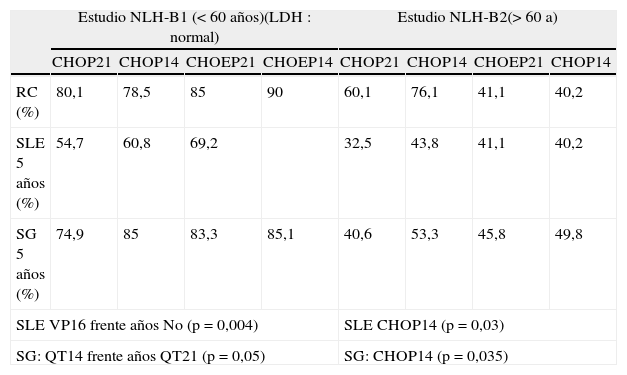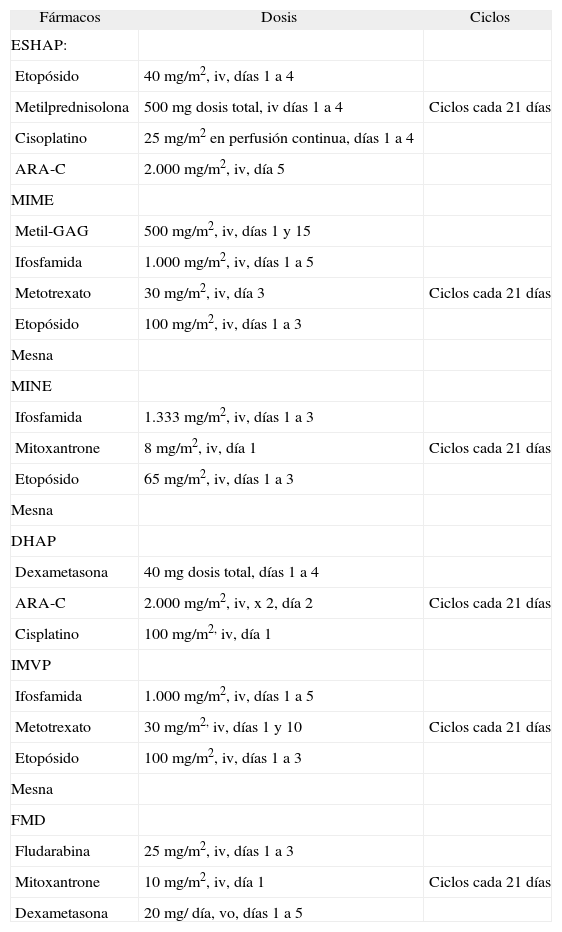Los linfomas agresivos en estadios localizados I y II, sin masas voluminosas y con un Índice Pronóstico Internacional (IPI) bajo (30% de los casos) tienen altas posibilidades de curación, cerca del 80% con el tratamiento combinado de quimioterapia tipo CHOP (3-4 ciclos) seguido de radioterapia (RT) sobre áreas afectas. En los linfomas agresivos localizados con signos de mal pronóstico o estadios avanzados (III-IV), el tratamiento es la inmunoquimioterapia con rituximab. Como segunda línea en pacientes quimiosensibles (DHAP, ESHAP, MINE, VIM, DICE, etc., más rituximab) deben valorarse las altas dosis con soporte hematopoyético, no así en los refractarios.
Aggressive non-Hodgkin's lymphomas (NHL) in localized stages I and II, without bulky areas and a fair International Prognostic Factor (IPI) (30% of all cases) have high possibilities of cure (80%) when treated with combined chemotherapy, CHOP or CHOP-like (3-4 courses) followed by locoregional radiation therapy. Localized aggressive non-Hodgkin's lymphomas with signs of poor prognosis or advanced stages (III and IV) must be treated with rituximab-containing immunochemotherapy. As second line in responding patients (DHAP, ESHAP, MINE, VIM, DICE, etc., and rituximab) high doses chemotherapy with hematopoietic growth factor support should be considered, although not in refractory patients.
Article
Diríjase desde aquí a la web de la >>>FESEMI<<< e inicie sesión mediante el formulario que se encuentra en la barra superior, pulsando sobre el candado.

Una vez autentificado, en la misma web de FESEMI, en el menú superior, elija la opción deseada.

>>>FESEMI<<<








